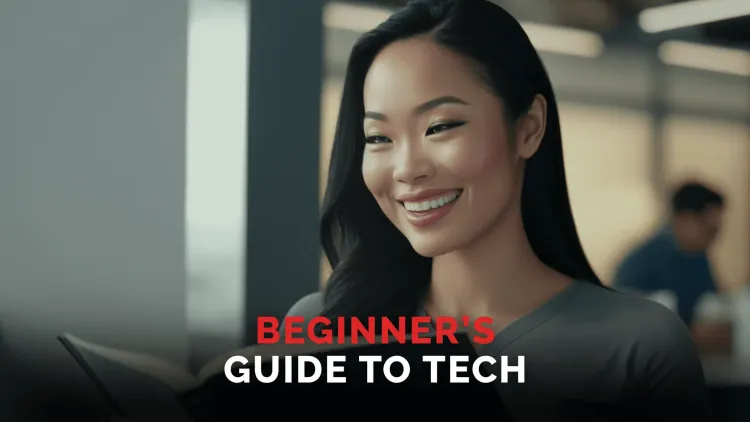Competitive Positioning
This lesson sheds light on how marketing teams craft their competitive positioning, how it can help you sell more.

Aug 23, 2022
How to position yourself in the age of information!
Who comes up with your competitive positioning? Probably your marketing team. And what they come up with directly affects how you do your job. This lesson sheds light on how marketing teams craft their messaging, and how market knowledge, competitive intelligence and the inner workings of your sales cycle can strengthen it to become more about helping and less about selling. Call it "smarketing", call it sales and marketing alignment - simply put, how marketing feeds sales with regards to the competition.
Competitive Positioning Course Modules:
Competitive Positioning
Competitive Positioning Interview Transcript:
Donna Litt: Welcome back. Thank you so much for joining us for Kiite academy. In our next module Competitive Positioning, we have today with us Cam Davies again. Thank you so much for joining us. Cam, let's jump right into subject matter. Product marketing, you're an experienced Product Marketer.
You've been doing it for 10 plus years and I know from personal experience that marketing, product marketing teams are responsible for doing so much for the sales teams that you enable. And so my question for you is, it's a very broad one. What goes into the positioning of a product?
Cam Davies: Oh that's a, it's a big question. I mean positioning really is almost a strategy statement of saying, this is where we are going to be in the market, this is who we're going to serve and this is how we're going to be a little bit different than you know the next competitor.
We’re probably familiar in some way with kind of the academic positioning statement that says for whom we are you know X category that serves a benefit unlike something else. Which I think is a good start. It kind of orients you into thinking more specifically about who you're serving and who your target market might be.
But at the end of the day, it doesn't really bring it alive. And I think we need to start thinking about our buyers as people, as people that are going to research things and already have certain biases in their head. There’s been research and the number keeps going up. But you know greater than 70 percent of the buying decision is already made up by the time they come and they're talking to you.
I think that's a little bit of an overstatement. I actually think they have about 70 percent of their bias already made up. So a good opening into the sales process is going to understand what those biases are. And when we think about positioning, we have to think about you know the competitive alternatives and oftentimes it's not another piece of software, it's not your competitor who you know hate and you just want to squash.
It’s the excel spreadsheet, it's the intern, it's the way that they're doing it now. That’s you know status quo is usually your greatest competition. So when we think about positioning, we have to think about it from that perspective as well. You know unlike using an excel spreadsheet; this is how we might be different. It’s so critical in positioning.
Donna Litt: Yeah it sounds like status quo, is one of those big blockers or something that we need to be able to position ourselves our products against.
Cam Davies: I think when we also consider positioning; we have to think about what's unique about us. So usually the unlike statement has to come into it and I think that's where anchoring and positioning also plays a really big role.
Another really powerful concept in positioning is really anchoring on something familiar. So we've heard a lot of tech companies say that they're the UBER of something or the Airbnb of something.
And what they're doing there is really powerful because instead of asking you to put the mental energy into just understanding what I’m trying to describe to you, I already have a level of understanding that we can both agree on. And then I can put my mental energy into understanding how you're different.
So I’ll give you real examples. For Bonfire, we are e-sourcing software, so my market has an understanding of what that might be. But specifically for the needs of government. So immediately as a government employee, I’m thinking okay like they have something for me and it's interesting.
At Clearpath, it was, we sell self-driving vehicles for industrial automation. But instead of being a dumb line driven robot, we can make decisions in real time and get to your end destination. So again self-driving vehicles, a little bit more out there but people kind of understand that concept and you're able to root yourself differently than you would if I said we're just another robot for industrial automation.
At MioVision, the whole premise was we're smart city technology or smart city traffic technology, but built on open innovation. So that you don't end up like you are today with 40 or 50 year old traffic technology that handcuffs you from making improvements to your citizen driving experience. So the power of anchoring and positioning is just so critical and it really helps to fast forward the understanding of what you can offer to the market.
Donna Litt: Yeah it sounds like there's a lot of thought process and development that goes into figuring out what that hook is or how to position it.
And so I’d love to hear your perspective in terms of how we managed to do all of that, but in this perpetually changing environment. because as we both know in software companies in today's market things are changing all the time. So how do you achieve that level of you know understanding but on a regular basis when everything is changing.
Cam Davies: Sure I mean in that case, I think it truly comes back to understanding your buyer persona. I mean people are still buying stuff. There’s a reason that I’m going to take another phone call with you or I’m not.
Usually people get struck first with the emotion of buying something. So how's it gonna make me feel, is it gonna make me feel you know like a hero in my organization, can I instantly feel that you know my boss is gonna like this and I’m gonna be able to you know elevate myself or am I gonna be able to remove some kind of risk in my organization. so far more than feature check marks or exactly how we're gonna solve it versus competitor A and competitor B, it's about how we're adjusting the needs of that buyer persona.
If you can hit them with a bit of an emotional hook and be able to make them feel like you can solve a pain or help them reach some emotional you know level that they'll gain internally, then you hit them with the logical reason. So you know going a few years back, you know, everyone has a certain emotion tied to Tesla you know recently maybe it has changed back when they were launched, no one can deny like it was super cool, it was a technology that's been around for a long time but they made it cool and very desirable.
So instantly your emotion tied to it. And then they gave you these calculators to say how it was you know far more cost effective than gas and you can pay the premium that you would need to pay for something like a Tesla, but then pay it back over a number of years. That’s not why anyone's buying a Tesla.
They’re buying it for the emotional reason, and then they can go and they can talk to their partner about listen we're going to go buy a 90000 dollar car, but here's the economics behind it and why it makes sense for us. You know when you hit it in that order, you have a much better likelihood of having that next meeting or being able to be invited into the sales process a little bit further no one ever buys something because of you know the economic reason right off the bat. There's got to be some kind of emotion tied to it.
Donna Litt: Yeah so it sounds like really tapping into that why somebody might want to use a thing and to your point the emotional aspect. And so what are some techniques as a product marketer, if you can think of I need to share that would let you get access to that emotion like, how do you think about creating language that connects emotionally? How do you do that?
Cam Davies: I mean a lot of it comes from joining sales calls, from talking directly to prospects and being putting your product hat on because unlike a salesperson, I can kind of step out of that role and say listen I’m not going to try to sell you something. It sounds like you've already got your mind made up or you're maybe you're a couple years away from doing something like this.
So let me ask you know what are all the reasons that you wouldn't do something like this? what are all the objections that you would have as we would go through the sales process and just understanding almost that anti-checklist, I think is so incredibly powerful, because instead of letting the prospect come up with those reasons themselves.
You’re almost heading them off and then, you're making them feel comfortable, you're making them feel confident that you understand me and you've got my best interest at heart.
Donna Litt: Yeah I love that so much of what you're communicating is this idea again anticipation you know the more you can anticipate, the more you can proactively address to let the conversation move smoothly. I think that comes across really well.
Cam Davies: Yeah I think marketing teams that aren't closely connected to the customer or maybe there's like a little bit of a divide between actually knowing what prospects are saying and then the marketing team may be having a philosophical idea or an academic idea of like okay, we're gonna say it's efficiency and we're gonna say it's savings and we're going to say you know whatever other third value it might be. you know if we can do a better job understanding the emotional state what motivates someone, what is going to cause someone pause.
I think we can create much better marketing materials which then translate into you know a warmer lead and then when it comes to product marketers creating tools that help to feed the prospect, their own feeling of importance and understanding that we get them as a selling organization. So that when we're having those conversations we sound credible.
Donna Litt: Yeah I love that idea the better you are that the warmer the lead is. It really does kind of evoke that idea of an emotion. Because you are actually warming leads up to you through this practice. So I think it's great. Thank you for sharing that with us. And thank you everybody who watched. I hope that you enjoyed that again as much as I did. We’ll see you when you tune in to the next module.





